Apple often refers to the iPad as the future of computing with its slim form factor and touch display. The company offers a wide variety iPads, from a budget-friendly model for students to a high-end powerhouse aimed at professionals.
The iPad was the last new hardware product category Steve Jobs announced before his passing. In the company's 2010 launch event, Jobs described the experience of using the tablet as "holding the internet in your hands."
Despite post-launch-event blowback mocking the iPad's name and dismissing it as an oversized iPhone or iPod touch, both consumers and critics hailed Apple's iPad as another breakthrough. It stormed its way to 15 million sales from April to December of that first year alone.
Current models for sale:
New iPad
Apple revealed the updated base iPad and the iPad Air in March 2025. These devices go against many of the rumors, so it places the M5 iPad Pro into question.
The iPad Pro line could get M5 sometime in 2025, but rumors place it after the release of an M5-equipped MacBook Pro. That means the new iPad Pro may not be announced until the end of the year or early 2026.
11-inch iPad
Apple's entry level iPad is in its 11th generation. It was formerly referred to as the 10.9-inch iPad, but Apple's trend of simplifying names continues as it is referred to the 11-inch iPad. Apple calls it the iPad (A16).
The device surprisingly only made it to the A16 chipset, which means no Apple Intelligence. It may be due to the need to hit a target price point for education.
Otherwise, the device is unchanged externally. It has the full-screen Retina LED display, USB-C port, and single 12MP rear camera.
The selfie camera is on the landscape edge and supports Center Stage. A Magic Keyboard Folio is available that adds a trackpad and keyboard via the Smart Connector.
Apple Pencil USB-C and Apple Pencil (1st generation) work with the 11-inch iPad.
iPad mini
Apple's iPad mini sits somewhere between the base model and iPad Air. It has better specs than the low end, but it is also the smallest device in the lineup.
It uses the A17 Pro chipset so it has access to Apple Intelligence features. The 8.3-inch Liquid Retina Display is LED backlit, offers 500 nits of brightness, and works with Apple Pencil Pro.
iPad mini is an excellent portable gaming machine, e-reader, and casual consumption device. It's the best iPad-as-a-tablet form factor in the lineup.
iPad Air
Apple's iPad Air sits firmly in the middle of the lineup. It comes in 13-inch and 11-inch sizes, uses the M3 chipset, and has a USB-C port.
This tablet acts as a more-affordable entry point to better specs and Apple Intelligence. Artists may find the lower-priced 13-inch iPad Air much more approachable.
It lacks ProMotion, Thunderbolt, Face ID, OLED, and Nano Texture. The M3 chip is less powerful, but plenty capable for most needs.
iPad Pro
Apple's iPad Pro is the flagship tablet with all the top-end specs. It is also available in 11-inch and 13-inch sizes, but the displays are tandem OLED with ProMotion.
The M4 processor debuted in the iPad Pro and offers powerful graphics processing. Configurations with 1TB or 2TB of storage get 16GB of RAM and an extra CPU performance core.
Customers seeking to get access to every spec and feature can choose iPad Pro with the Apple Pencil Pro and Magic Keyboard for iPad Pro. Thunderbolt connectivity allows it to be easily swapped into a Thunderbolt docking station with an external monitor and accessories.
iPad lineup features
The iPad was first positioned as a content-consumption device for reading or viewing videos. However, Apple later improved iPad performance and added accessories that transformed this simple tablet into a complex computing platform.
Display and design
Though the basic design is still a glass and aluminum slab, Apple's iPad has grown thinner and lighter through the years, with shrinking bezels, bigger and better displays, and the home button removal.
Every iPad model today has a Retina Display, Apple's marketing term indicating that human eyes won't differentiate individual pixels from a standard viewing distance.
Ultra Retina XDR Display
- Used on the 11-inch and 13-inch iPad Pro
- 264 ppi
- Tandem OLED
- P3 color gamut
- True Tone
- 1,000 nits SDR/HDR, 1,600 nits HDR peak
- Fingerprint-resistant oleophobic coating
- Fully laminated dispaly
- Anti-reflective coating with Nano Texture option
- ProMotion technology
Ultra Retina XDR display for iPad Pro
- 264 ppi
- Tandem OLED
- ProMotion 10Hz to 120Hz refresh rate
- P3 color gamut
- True Tone
- 1000 nits max brightness, 1600 nits max HDR brightness
- Fingerprint-resistant oleophobic coating
- Fully laminated display
- Anti-reflective coating
Liquid Retina Display on iPad Air
- 264 ppi
- LED
- P3 color gamut
- True Tone
- Max brightness: 11-inch 500 nits, 13-inch 600 nits
- Fingerprint-resistant oleophobic coating
- Fully laminated display
- Anti-reflective coating
Retina Display on 11-inch iPad
- 264 ppi
- LED
- 500 nits max brightness
- sRGB
- True Tone
- Fingerprint-resistant oleophobic coating
Retina Display on iPad mini 6
- 326 ppi
- All-screen LED
- P3 color gamut
- True Tone
- 500 nits max brightness
- Fingerprint-resistant oleophobic coating
- Fully laminated display
- Anti-reflective coating
True Tone, included on all iPads in today's lineup, uses ambient light sensors to adjust the screen's white balance based on your environment.
ProMotion technology, available only on iPad Pro models, supports up to a 120Hz refresh rate for "fluid scrolling, greater responsiveness, and smoother motion content." It also provides more responsive Apple Pencil input and varies the iPad screen refresh rate to reduce power consumption.
iPadOS
iPadOS is an operating system branched from iOS that Apple is now developing in parallel. Previously, iPads would only see a few changes year-over-year in software, and this dedicated OS indicates Apple wants to do more for the iPad.
iPadOS and iOS share much of the same code base, meaning iPadOS is only distinct in a few key features. These differences have increased and become more varied as Apple updated the two.
With iOS 9, the tablet software showed a significant shift from the iPhone with the added ability to have multiple apps on the same screen. Slide Over adds a second floating app you can bring onscreen by swiping from the edge. Split View, meanwhile, places two apps next to each other, spaced evenly or asymmetrically.
Multitasking and productivity were later refined in iOS 11 with better file sharing and drag-and-drop gestures. iOS 13 arrived in 2019 with many new features across the ecosystem, and with it, iPadOS. With its improved split-screen, multi-window app states, and external storage support, Apple's iPad took a significant leap forward as a laptop replacement.
iPadOS 15 was released in 2021 with minor alterations to the multitasking system to help users understand how to initiate and switch apps more easily. A new ellipsis appears at the top of each active window with options to place the app into different positions.
Stage Manager was introduced in iPadOS 16, bringing the software to another level with a native app windowing system. It went through a rocky beta cycle after it was announced in the spring of 2022. It is only available to iPads with an A12X, A12Z, M1, or M2 processor.
iPadOS 17 improved on Stage Manager, but otherwise didn't do much to push iPad productivity forward. The release also included support for customizable Lock Screens and interactive Home Screen widgets.
iPadOS 18
Announced at WWDC 2024, iPadOS 18 will debut in the fall and will bring a handful of new features to Apple's flagship tablet. Many new features are shared with iOS 18, but several are iPad-exclusive.
Smart Script
Part of the Notes app, iPadOS now lets users perform text editing on their handwriting through a feature called Smart Script. For handwritten notes in Notes, users can now spellcheck their text, with changes made to blend into the user's scribbles.
Calculator
After years of user request, Calculator has finally come to iPad. As part of its debut, Apple has created a new Math Notes feature, allowing users to handwrite their math problems. When writing in expressions, the Calculator will immediately solve problems once an equal sign is written.
Updates shared with iOS 18
A redesigned Collections feature in the Photos app automatically organizes the library by topics like Recent Days, Trips, and People & Pets. If you have a few favorite collections, you can pin them for quick access to the collections or albums most important to you.
Control Center now has more robust customization options. This includes the ability to sort controls under categories, as well as swapping out controls on the main screen.
Users are no longer restricted to the standard app icon layout anymore. The new iOS 18 adds the ability to arrange apps along the bottom for quicker access or along the side to frame a favorite wallpaper. Icons on the home screen can also be tinted to fit your theme better.
New text effects allow you to animate words and emojis with various effects. Some words and phrases will automatically display a suggestion, but users can add text effects to any text they select. Users can now bold, underline, italicize, and cross out text.
Apple has expanded Tapback options for Messages, now allowing users to respond with any emoji or sticker, including live stickers and stickers from packs purchased through the Messages App Store.
Send Later allows users to schedule when to send a message, perfect for ensuring you don't send someone a message when they're sleeping or when you want to schedule a birthday message.
Game Mode minimizes background activity while gaming. This allows the iPhone to sustain high frame rates for long gaming sessions.
Apple has added the ability to create, view, edit, and complete reminders from the Reminders app in the Calendar app. It has also redesigned the month view for easier browsing.
Apple Intelligence
Apple Intelligence is Apple's initiative to incorporate artificial intelligence into its products. Due to Apple's emphasis on security, most of the Apple Intelligence processes take place on the device itself.
Additionally, Apple defines Apple Intelligence as "personal intelligence," with a focus on improving how users engage with the apps and services they already use, rather than concentrating on new use cases.
Apple Intelligence is only available on M-series Macs, iPads, and iPhones equipped with the A17 Pro chip or newer.
iPad apps
The App Store operates as the sole storefront for software on iPads. Apple does not allow users to side-load apps from the web or use other app stores on iPadOS.
Many apps draw from the same codebase as their iPhone counterpart, with the iPad version making better use of the larger display. Developers often use multiple panels for iPad apps that wouldn't fit on an iPhone's screen.
Apple pre-loads every iPad with various first-party apps. Once users finish the onboarding process on a new device, they can go to the App Store and download free and paid apps via their Apple ID.
App updates are free, but developers may lock some features behind paywalls called in-app purchases or IAP. Some apps charge a subscription fee instead of IAP, unlocking features once a user subscribes.
Smart Keyboard and Magic Keyboard
Apple's first iPad keyboard accessory was a Keyboard Dock for the first-generation iPad that propped up the tablet in portrait mode. For several generations, Apple didn't release dedicated tablet keyboards.
When the first iPad Pro launched in late 2015, Apple began marketing the tablet as a new computing category that could replace a laptop for some customers. The Apple Smart Keyboard was an integral part of that strategy.
The Smart Keyboard is similar to the Smart Cover, snapping magnetically to the tablet and connecting instantly through Apple's Smart Connector. It has fabric-covered and water-resistant keys.
The Apple Smart Keyboard (or Smart Keyboard Folio), sold in several different sizes through the years, supports the following iPads:
- 12.9-inch iPad Pro
- 11-inch iPad Pro
- iPad Air 4 and iPad Air 5
- 9.7-inch iPad Pro
- 10.5-inch iPad Pro
- iPad Air 3
- 10.2-inch iPad (seventh- and eight-generation)
The Smart Keyboard was an iPad Pro exclusive until 2019 when Apple launched the iPad Air 3 and the seventh generation iPad, both supporting the keyboard accessory. The Smart Keyboard was officially discontinued with the release of the 2024 iPad updates.
In early 2020, Apple launched the Magic Keyboard for iPad Pro, which added Mac-style scissor-switch keys and a glass trackpad that took advantage of cursor support. The accessory has a stand that magnetically mounts the tablet, making it float above the keys while dynamically tilting at various angles.
The Magic Keyboard for iPad supports the following models:
- 11-inch iPad Pro (first-generation through fourth-generation)
- 12.9-inch iPad Pro (third-generation through sixth-generation)
- iPad Air 4 and up
An updated Magic Keyboard for iPad Pro was introduced in 2024 to support the new ultra-thin iPad Pro models. It has a similar design, but has a function row, bigger trackpad, and an aluminum wrist rest.
In 2022 Apple announced the updated 10.9-inch iPad and a keyboard case to go with it. Since the Smart Connector was in a different location to other iPads, it needed its own keyboard, so Apple released the Magic Keyboard Folio.
This keyboard only works with the 10.9-inch iPad for now. It is a two-piece system with a case and kickstand on the back and a keyboard attached via a magnetic base.
Apple Pencil
The first-generation iPad Pro also marked the arrival of the Apple Pencil. Its primary use case was targeted at drawing and taking notes.
For sketching, the Apple Pencil has low latency, pressure sensitivity, and support for tilting and shading. You can also use it as a pointer to edit text, navigate apps or web pages, or sign documents.
The first-generation Apple Pencil has fully rounded sides. It pairs and charges through the iPad Lightning port, one of the limits of the original Apple Pencil. It leaves the iPad with a protruding stylus and simultaneously prevents users from charging the tablet and Apple Pencil.
The first-generation Apple Pencil is compatible with the following models:
- 11-inch iPad
- 10.9-inch iPad
- 12.9-inch iPad Pro (first- and second-generation)
- 9.7-inch iPad Pro
- 10.5-inch iPad Pro
- iPad Air 3
- 9.7-inch iPad (sixth-generation)
- 10.2-inch iPad (seventh-generation and up)
- iPad mini 5
In late 2018, Apple introduced a second-generation Apple Pencil with several key improvements. Rather than being fully rounded, the second-generation model is flat on one edge, making it more ergonomic in hand and preventing it from rolling off surfaces.
The Apple Pencil 2 also supports wireless charging, mounting magnetically to the side of a compatible iPad to draw power. It also adds tap gestures, with sensors on the accessory's side registering finger taps as customizable responses. These customizable tap actions can include switching between tools and toggling the color palette.
The second-generation Apple Pencil supports:
- 11-inch iPad Pro (first-generation through fourth-generation)
- 12.9-inch iPad Pro (third-generation through sixth-generation)
- iPad Air 4 and iPad Air 5
- iPad mini 6
Apple released a new Apple Pencil with USB-C in 2023. It serves as a lower-end model that works with any flat-sided iPad model.
An Apple Pencil Pro was introduced in 2024 that supports wireless charging with the new magnetic charging system in iPads with landscape-oriented selfie cameras. It only works with the 2024 iPad Pro and iPad Air models.
It supports features like Barrel Roll, Hover, and provides haptic feedback.
Apple Silicon
Apple builds its custom processors for the iPhone, iPad, Apple Watch, Apple TV, and Mac. By developing its chipsets, Apple can customize its software to work directly with the hardware so that competitors cannot imitate it.
Apple Silicon isn't a single processor but a system-on-a-chip (SoC) that combines multiple technologies into a single wafer.
The iPad Air 4 contains the A14 Bionic chip, which is found in the iPhone 12 series. It utilizes a 5nm architecture and offers up to double the graphics performance of the previous generation. The chip has a six-core CPU and 11.8 billion transistors, 40% more than the A13.
The 2018 and 2020 iPad Pro lines use an A12X chip. While it's older than the A14 found in the cheaper iPad Air 4, the A12X has eight dedicated GPU cores that should give it an edge in graphically-intensive tasks.
The 2021 iPad Pros and iPad Air 5 use the M1 processor, the first Apple Silicon processor designed for Mac. Users can get 8GB or 16GB of RAM based on internal storage choice, but the iPad Air 5 only gets 8GB of RAM because it doesn't have the higher storage options.
The M2 came to iPad Pro in 2022 with little other new changes to the products. Other updates included WiFi 6E and an Apple Pencil hover feature.
Apple introduced the M4 processor and included it in the 11-inch iPad Pro and 13-inch iPad Pro in 2024. It improves on the M3 processor, which wasn't used in any model until the iPad Air in 2025.
The iPad mini 6 uses the A15 processor, the same one used in the iPhone 13. The 10.9-inch iPad used the A14 processor, and moved up to the A16 for the 11-inch iPad released in 2025.
Security
The first iPad biometric sensors arrived in 2014, with the arrival of Touch ID in the iPad Air 2 and iPad mini 3. After that, every new model Apple released used one form of biometric security.
The third-generation iPad Pro gained an all-screen design, replacing the Touch ID home button with Face ID. In late 2020, the iPad Air also went all-screen, but, perhaps to cut costs compared to Face ID, Apple instead opted for Touch ID in the device's power button.
The iPad mini 6 and 11-inch iPad uses the same power button Touch ID.
Apple moved the Face ID sensors and the selfie camera to the landscape side of the iPad with the 10.9-inch iPad then 2024 iPad Pro and 2025 iPad Air.
Ports and Connectivity
The first three iPads used Apple's old 30-pin connectors. In late 2012, Apple switched to a Lightning port for charging and syncing, starting with the fourth-generation model and iPad mini.
The following change arrived with the 2018 iPad Pro lineup, which shifted to USB-C for broader accessory compatibility. The iPad Air 4 and iPad mini 6 also use USB-C.
The 2021 iPad Pro lineup moved to Thunderbolt 3 when updated with the M1 processor.
The 10.2-inch iPad was the last model still using a Lightning port. It's successor, the 10.9-inch iPad, also moved to USB-C. The 11-inch iPad also offers USB-C.
Apple sells each model in both WiFi-only and more expensive WiFi-with-cellular-data variants. Cellular models are sold unlocked at full price and subsidized through wireless carriers.
Photography and Videography
For most people, cameras aren't as necessary on a large iPad as on a pocketable iPhone. iPads typically have cameras at least one or two generations behind the latest iPhone cameras.
Compared to other iPads, the iPad Pro line has higher-end sensors that can record video or create other professional content. The 2018 models have two cameras, including one 12-megapixel Wide Camera and a 10-megapixel Ultra Wide Camera.
Apple ditched the Ultra WIde Camera in the 2024 models.
The iPad Pro lineup also has a LiDAR sensor, supporting enhanced augmented reality (AR) content. It aids developers in creating content and improves user experiences for mapping spaces for AR.
In 2022, iPad Pros gained the ability to shoot video in the ProRes format. Multi-cam shoots with up to four iPhones can be controlled using Final Cut Pro on an iPad Pro.
iPad Services
Apple's tablet wouldn't be what it is today without the help of software and services. The company has slowly built an entire software ecosystem surrounding its ever-popular mobile devices. Through each of these services, paid or not, Apple adds to the base value of every iPad sold.
Siri on iPad
Siri is a powerful voice assistant that exists across Apple's product ecosystem. On the iPad, it acts as a user-facing assistant with deep app connections and controls, and it also serves as the background intelligence that powers everyday operations.
Contacts, Calendar, Photos, and even the system keyboard rely on Siri Intelligence to manage information and surface what is most relevant to the user. Siri also acts as the brains behind Shortcuts, which users can activate via the assistant, widgets, or in-app.
Apple does not directly monetize Siri, but it does use the assistant as a primary selling point for its mobile devices and audio gear like HomePod and AirPods.
iMessage on iPad
iMessage is an Apple proprietary technology using end-to-end encryption to send messages via the web. Sending and receiving iMessages is exclusive to Apple products and has been cited as a significant consumer lock-in source.
When communicating via iMessage, a user will see messages as blue bubbles, be able to share complex multi-media files, and use sticker packs and message effects. Apple also enhances iMessage group chats with unique features like message threads and custom group chat images.
Apple Arcade on iPad
Apple Arcade is a monthly subscription service to games across all Apple platforms. A $9.99 monthly subscription provides access to the entire game catalog and any new releases or updates.
Though most support third-party controllers, the service has games from multiple genres and can be played with touch. Apple's push into gaming has made them embrace controllers like the Playstation DualShock 4 and the Xbox Elite controller.
Apple TV+ on iPad
Apple Studios is a new media branch within Apple that purchases and manages content for the video-streaming service Apple TV+. The subscription costs $4.99 monthly and exists on every Apple platform and several competitor devices.
The Apple TV app is needed for viewing Apple TV+ and is available on iPadOS.
Apple News+
Apple News is a news-aggregation app, and the company offers a premium content tier called Apple News+. The monthly subscription is $9.99, giving customers access to premium articles from newspapers and magazines.
Apple Music on iPad
The music-streaming service that birthed Apple's push into services debuted in 2015. Apple Music is $9.99 a month and offers student and family plans. The service lives within the Music app on Apple's mobile devices, Mac, and the web.
Users can purchase music from iTunes when it is unavailable on the service, which will populate into their Apple Music library. If a user adds a physical CD to their Music app on macOS, the music will also be synced across their account.
iCloud Storage
The term "iCloud" is a catch-all for Apple's syncing and storage service across devices and apps. The service portion of iCloud is specifically iCloud Storage.
Apple charges the following monthly fees for its storage tiers:
- 5GB is free
- 50GB is $0.99
- 200GB is $2.99
- 2TB is $9.99
Apple Pay
Apple's tablets support Apple Pay, the company's secure payment service.
Apple Pay on iPad works in apps, in Safari, and with person-to-person and business chats. iPads don't support the NFC portion of Apple Pay used with in-store terminals.
Which iPad to buy
There is a distinct price ladder for iPad from $349 to $1,299 for base models. Add extra storage and cellular to climb easily to $2,599.
The 11-inch iPad is Apple's budget-friendly option. It has many of the features users expect from an iPad without any flashy technology that would increase the price, including Apple Intelligence.
iPad mini serves as Apple's small but mighty next step in iPad usage. It is more capable than the budget option with a better display, but more compact for a very portable and focused tablet experience.
iPad Air is the consumer-focused model with better processors and display technology than the budget option. It comes in 11-inch and 13-inch sizes and supports the Magic Keyboard and Apple Pencil Pro.
iPad Pro is Apple's flagship iPad that pulls out all the stops for display technology and processing power. It supports the Magic Keyboard for iPad Pro, has 120Hz ProMotion, and has a Thunderbolt port for a range of connectivity options.
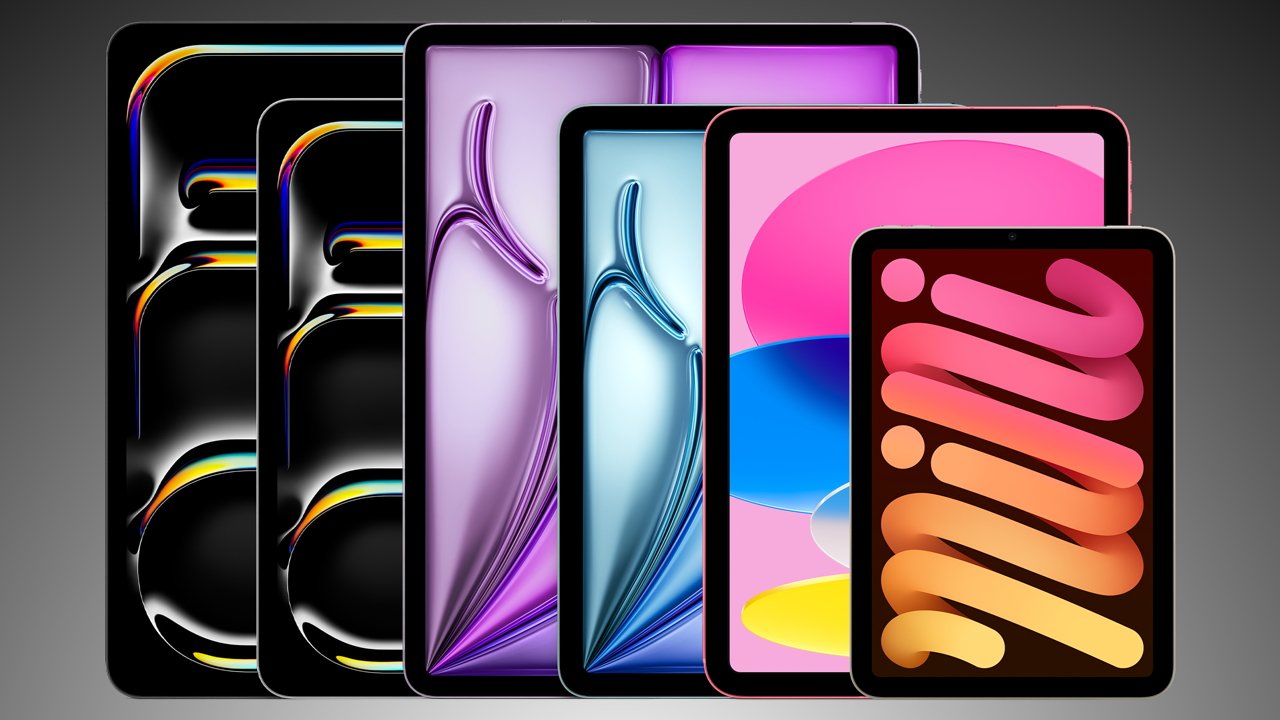
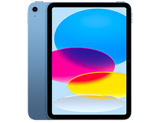

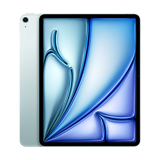


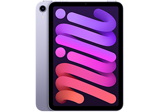



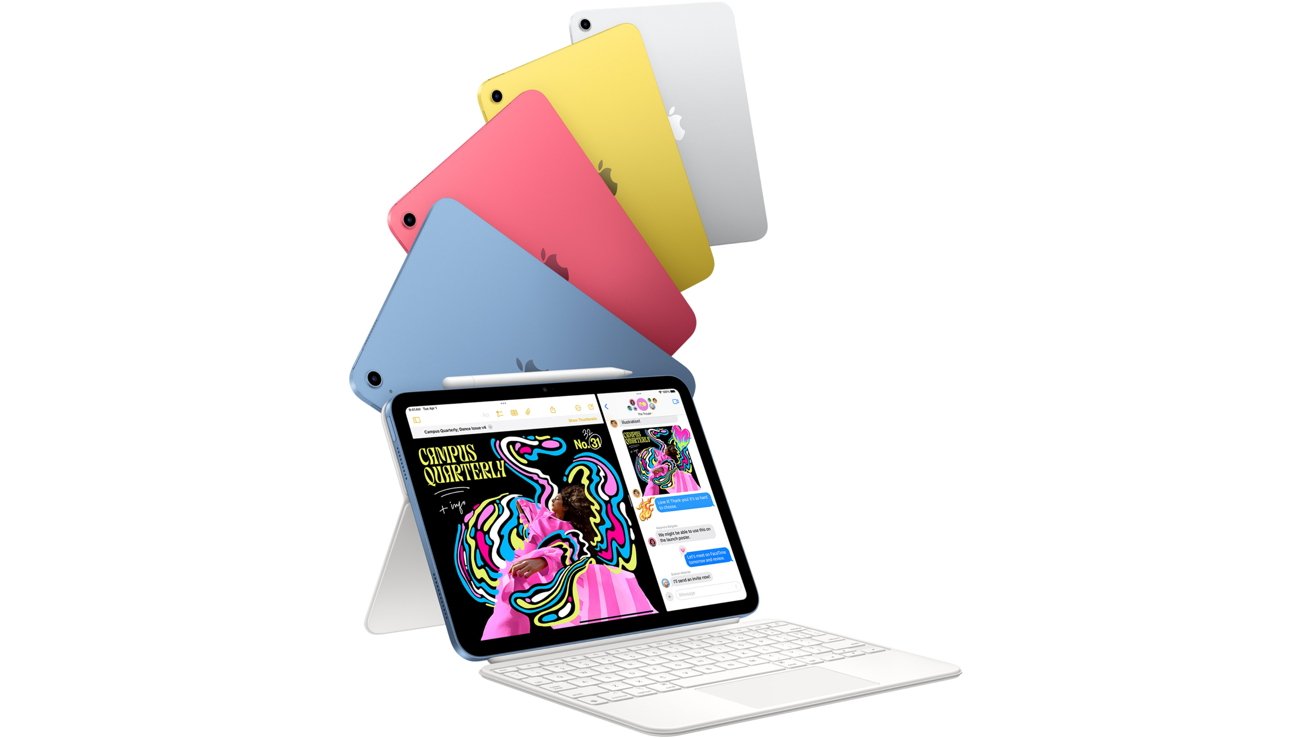
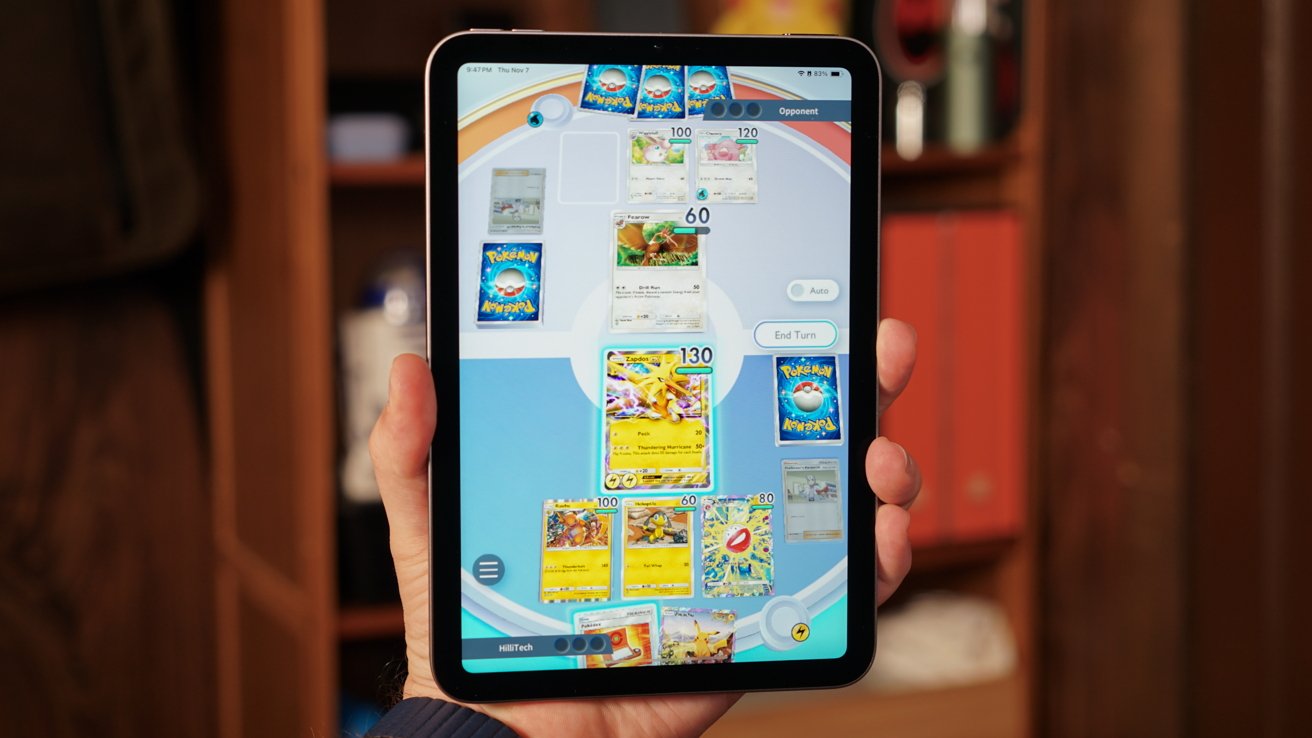
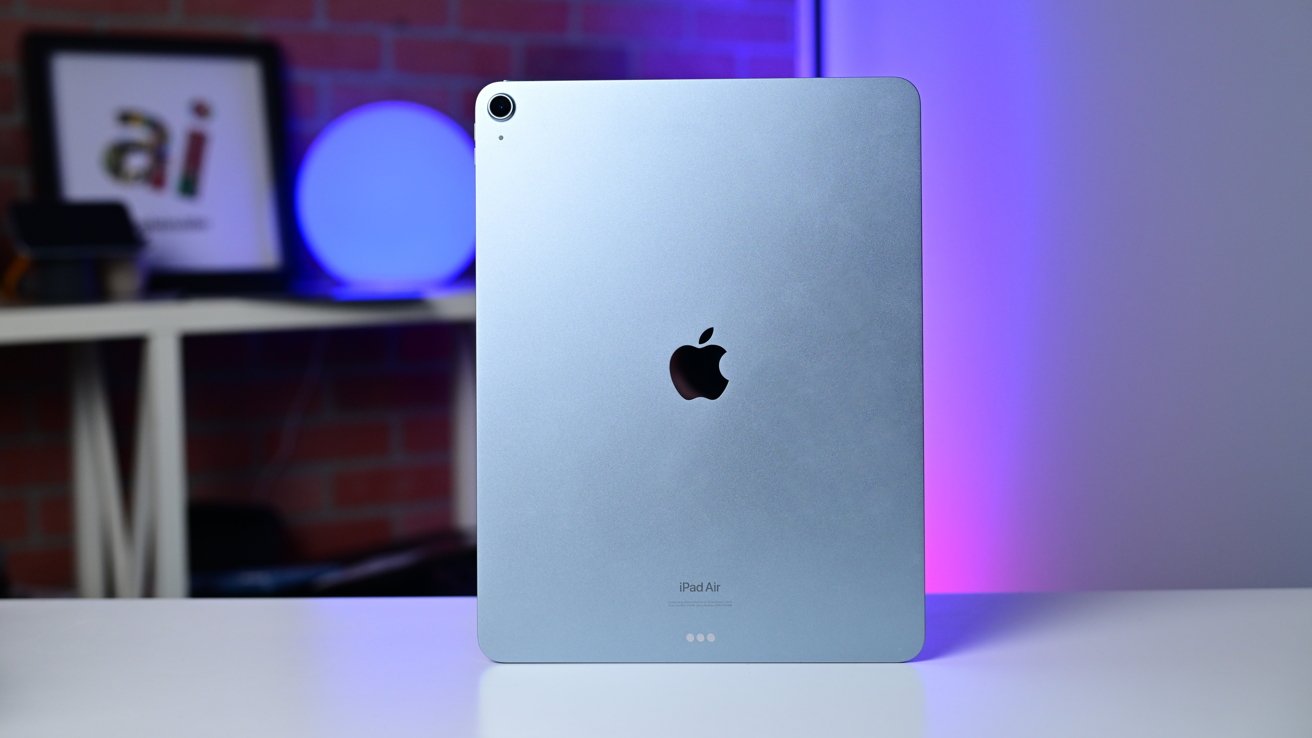
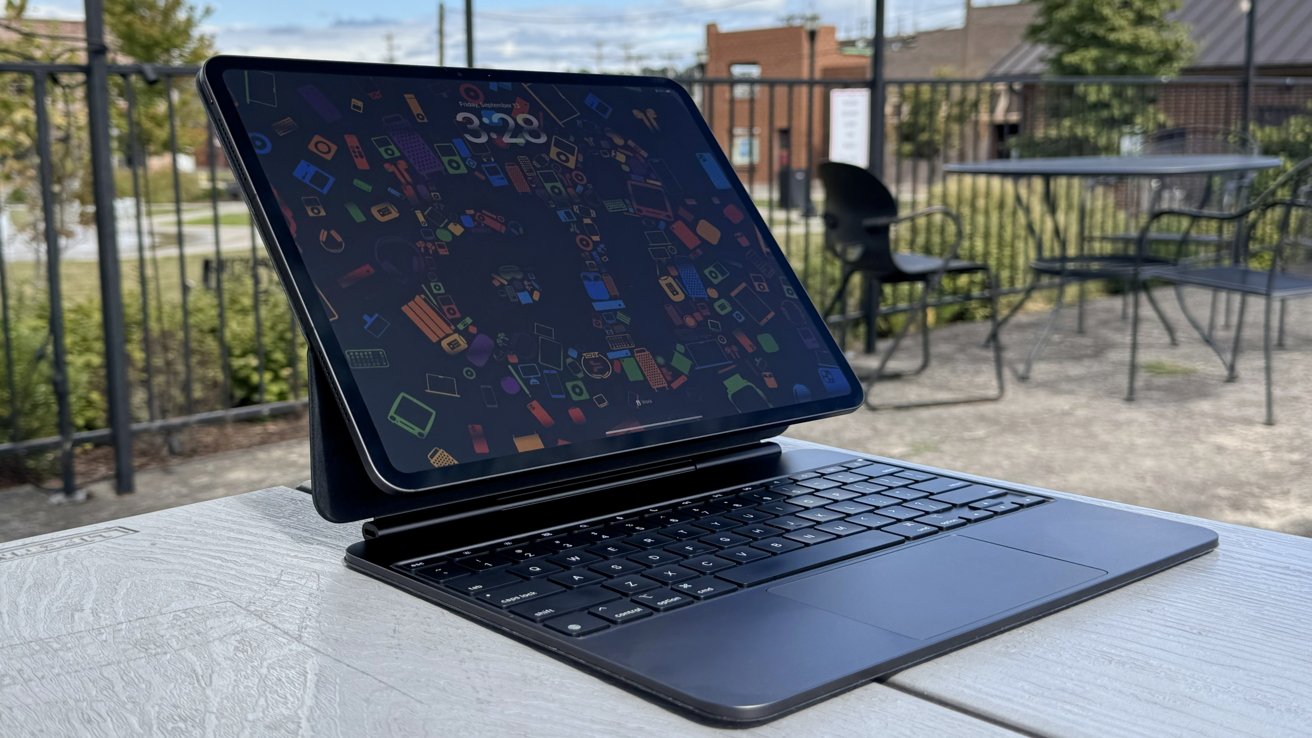
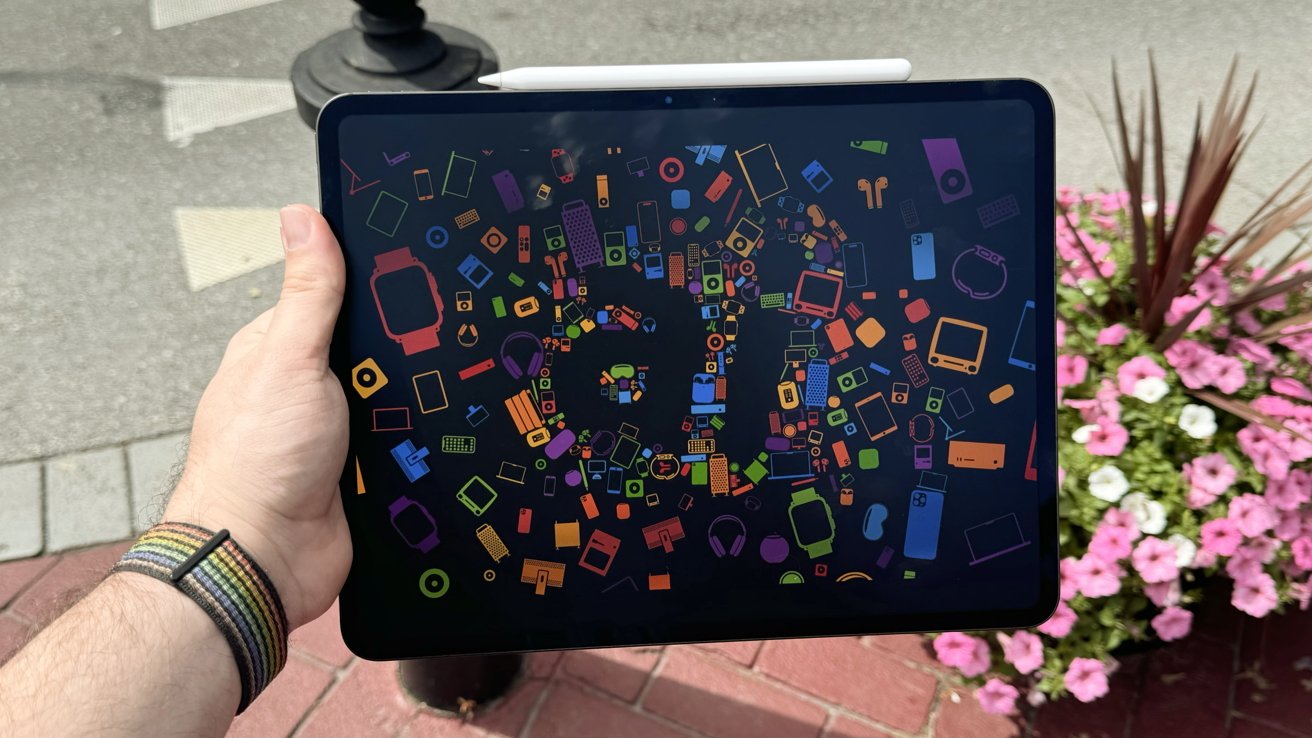
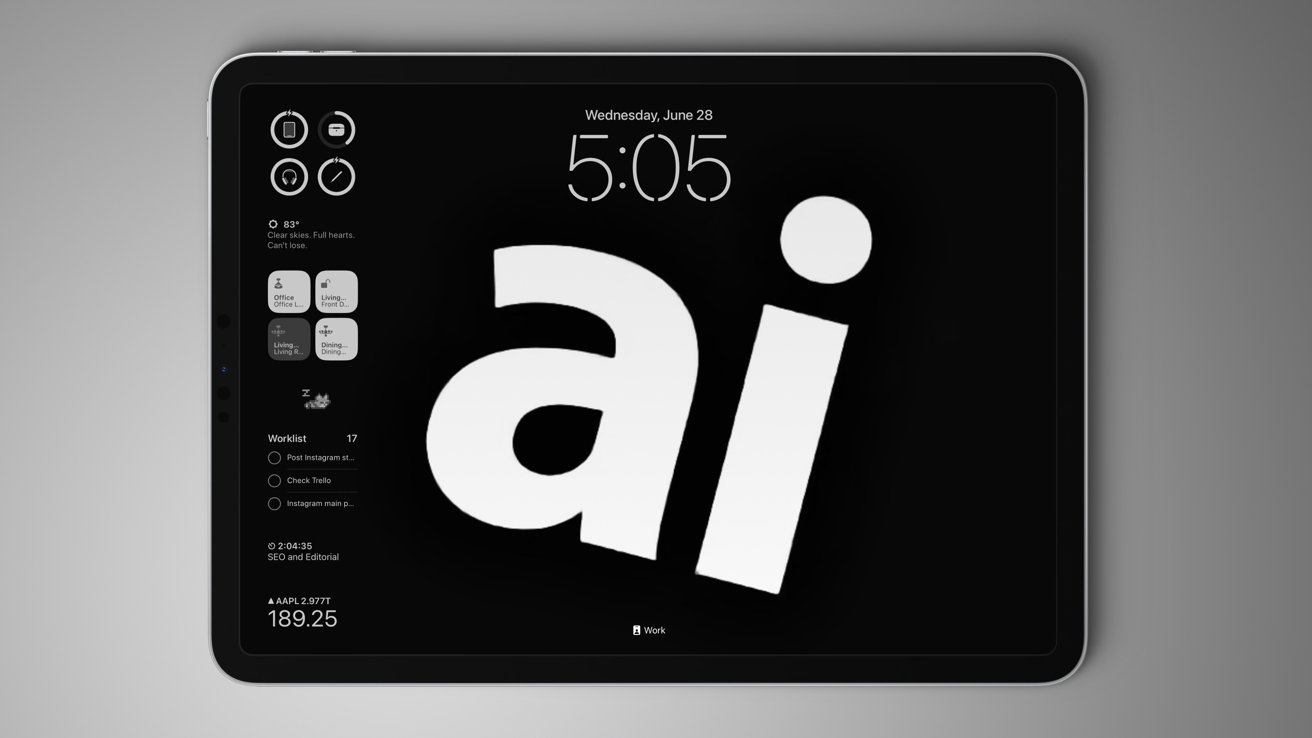
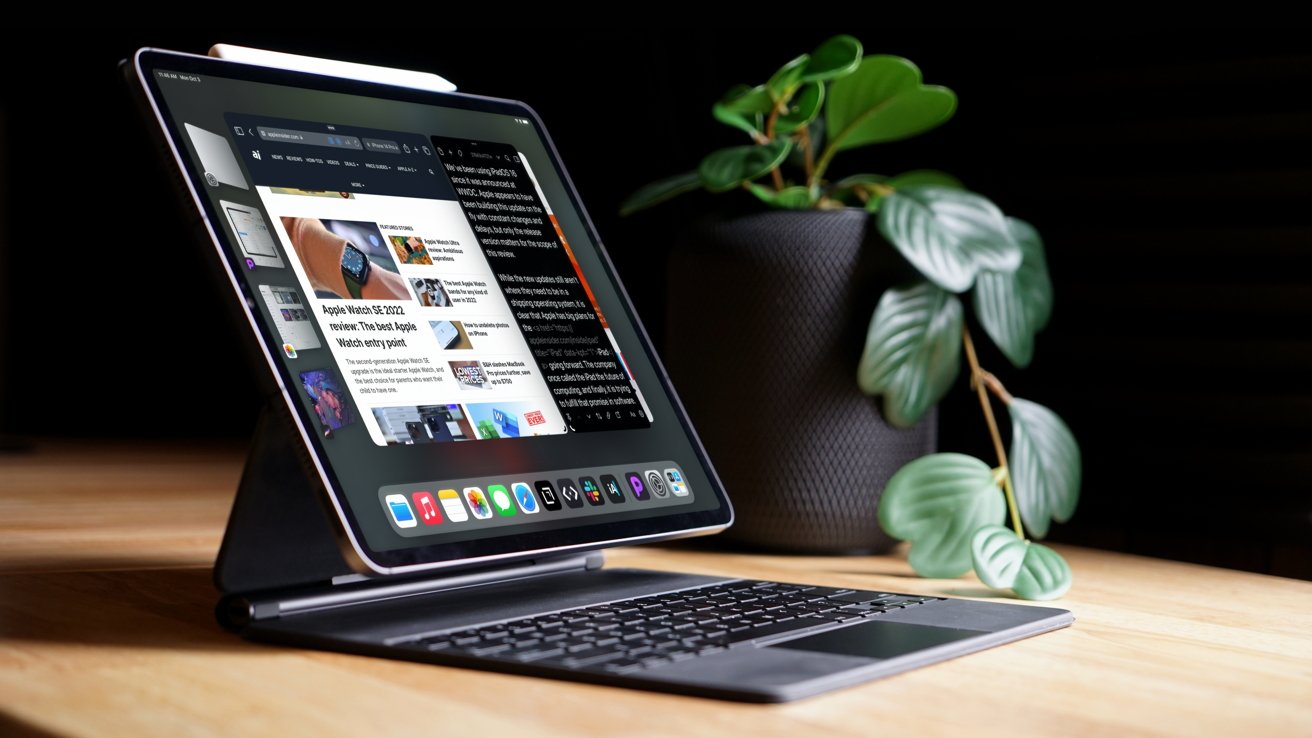
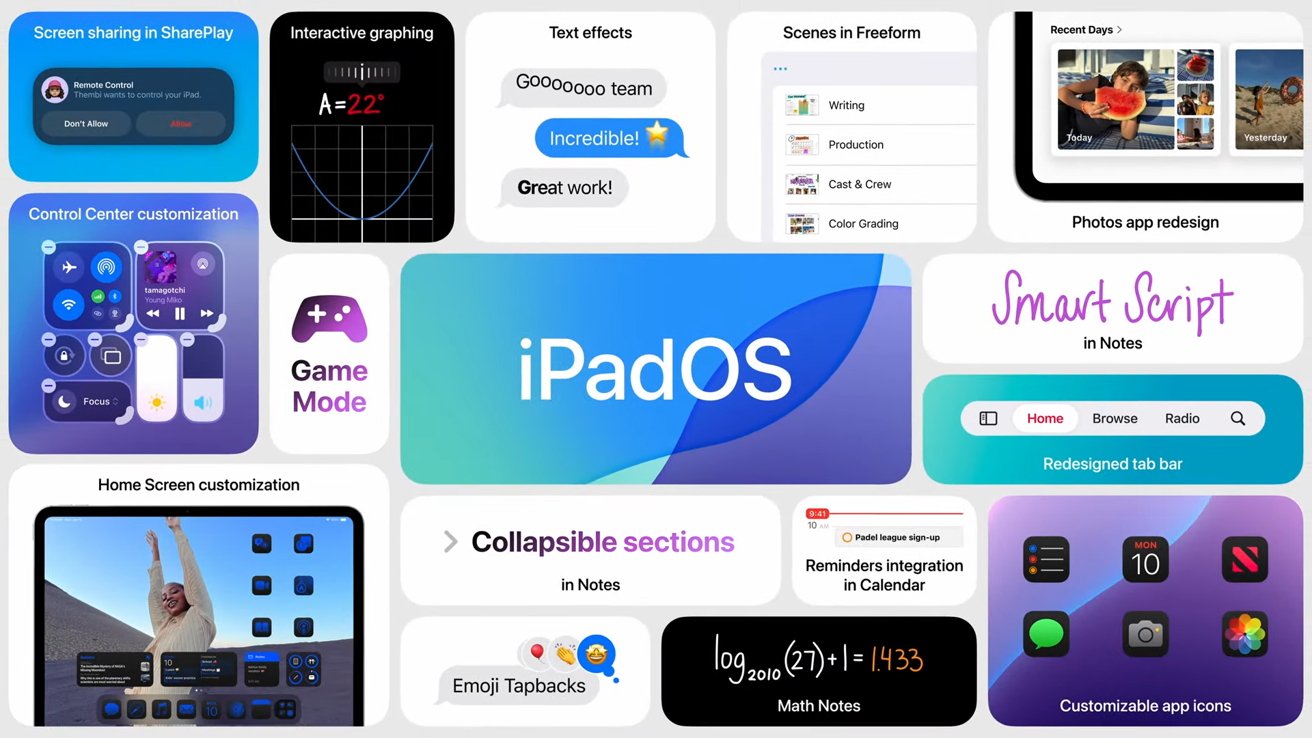
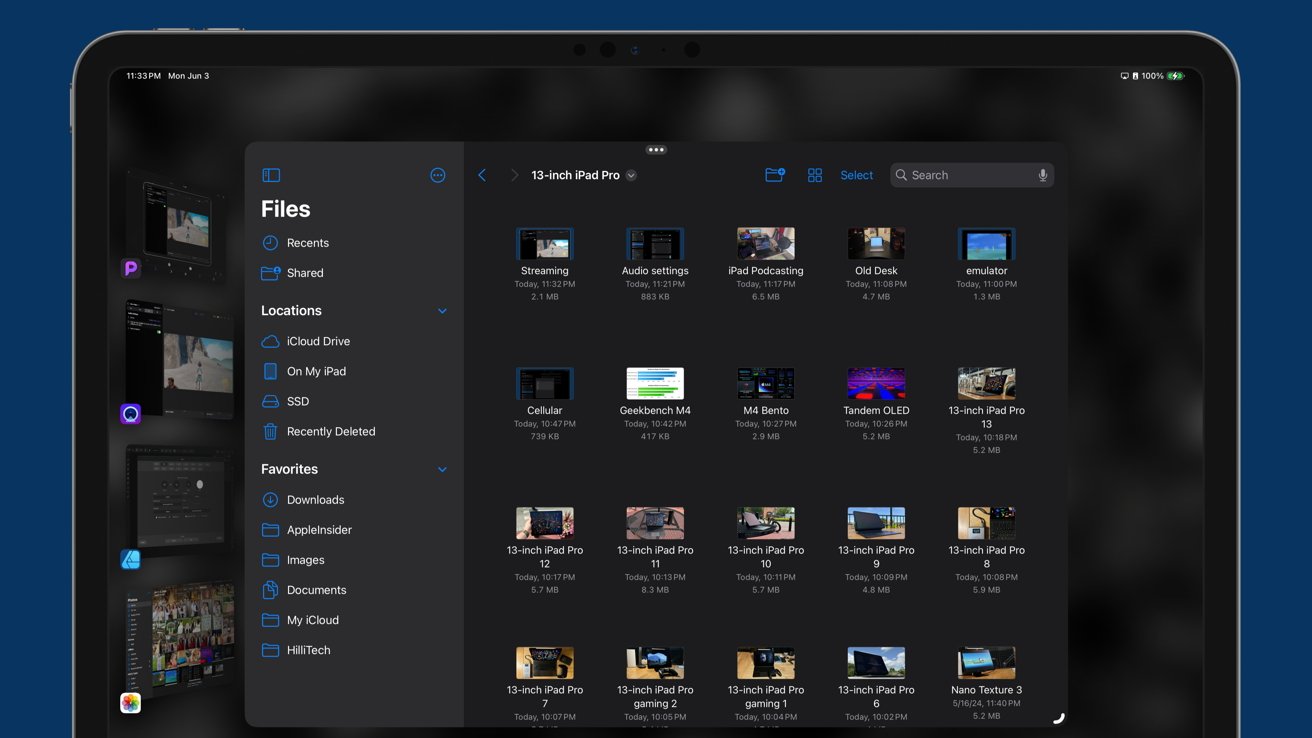
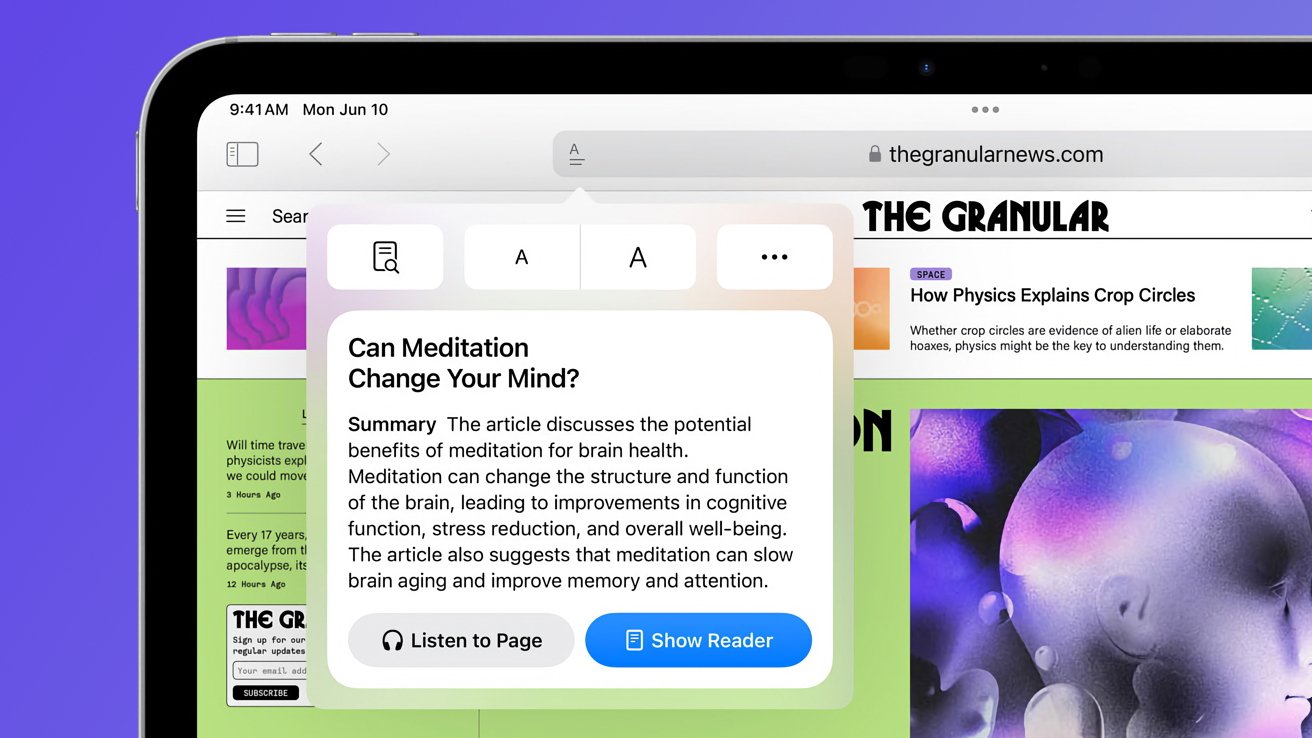
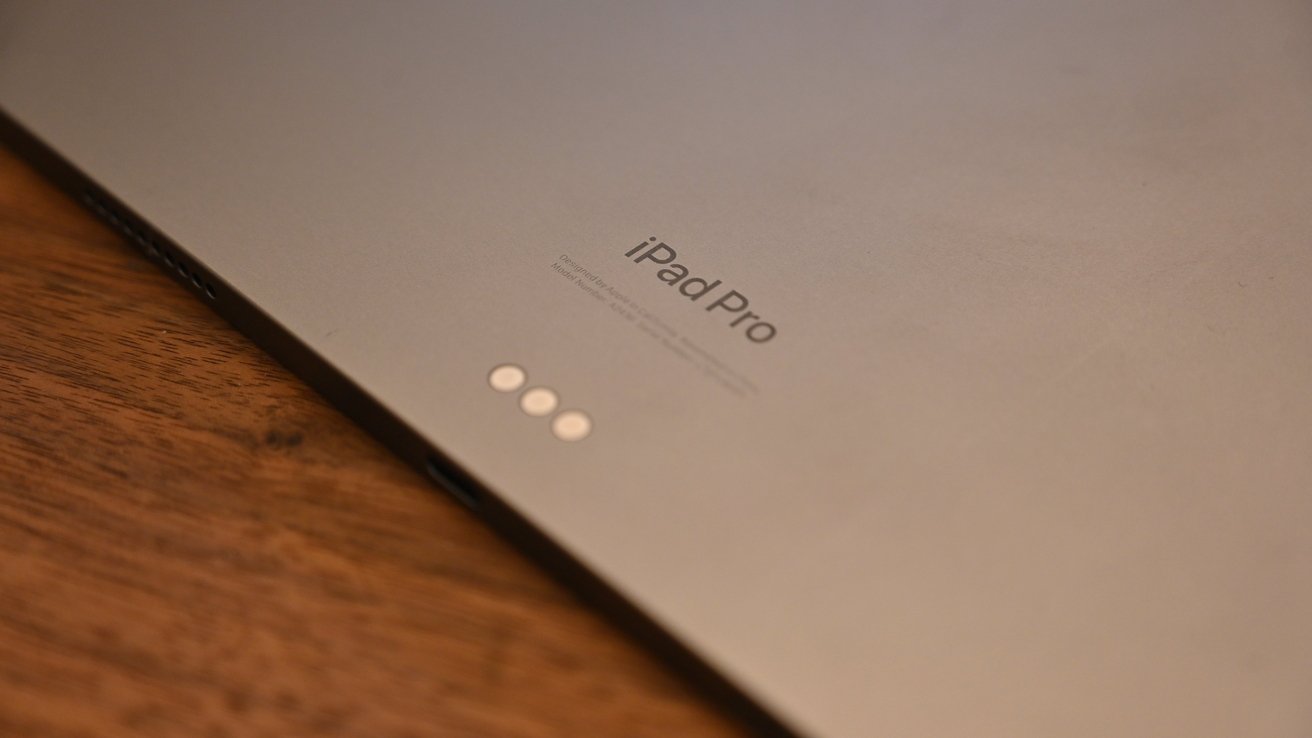
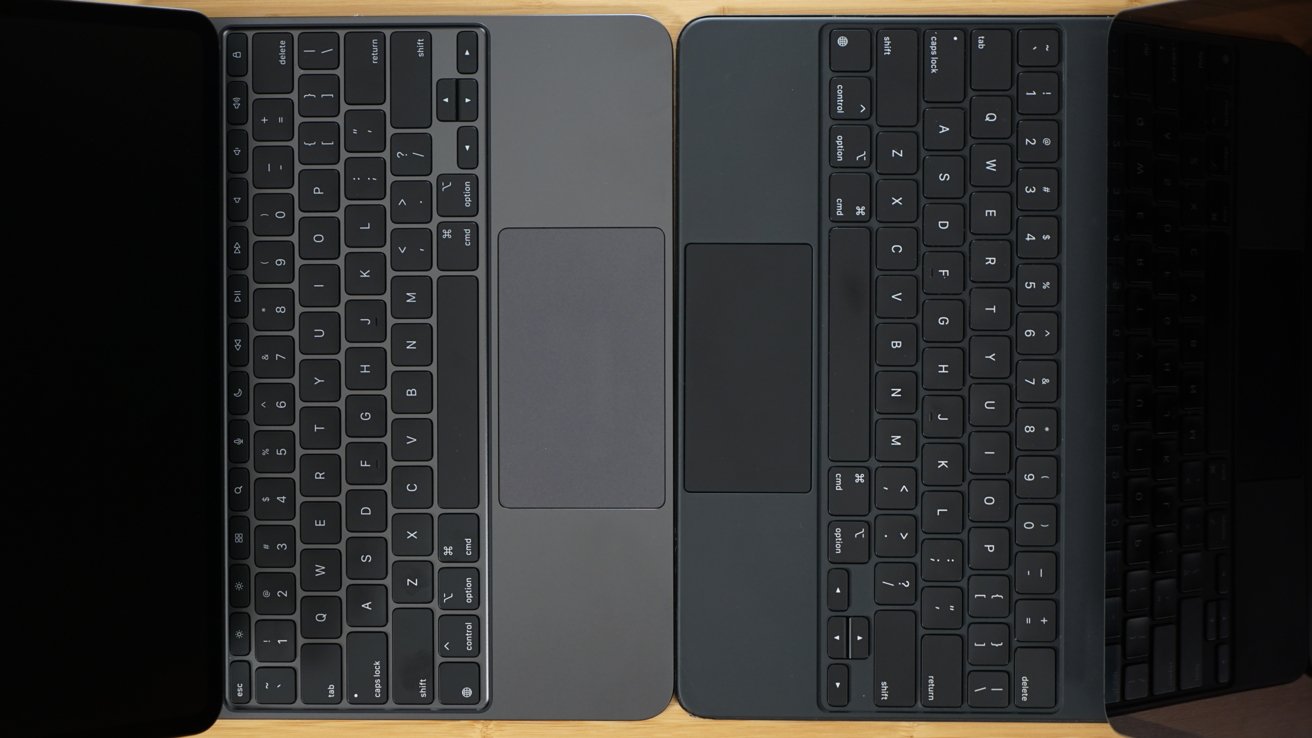
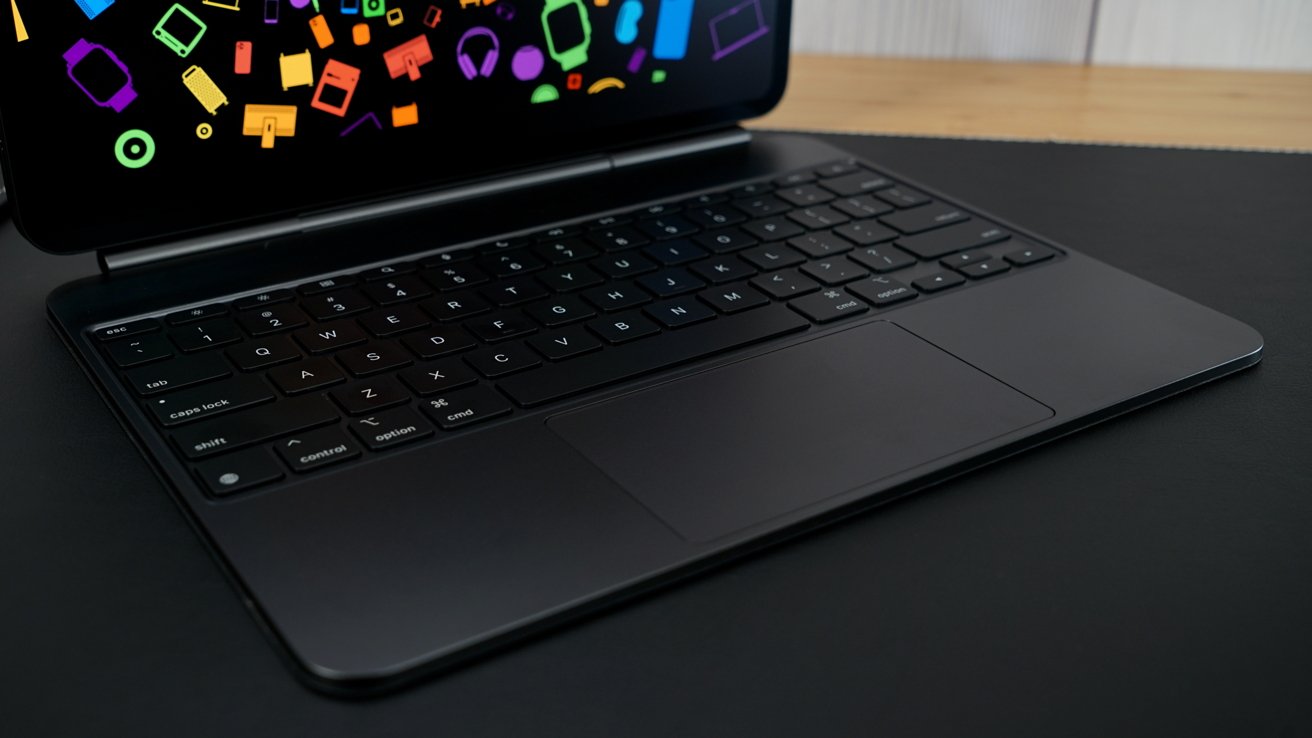


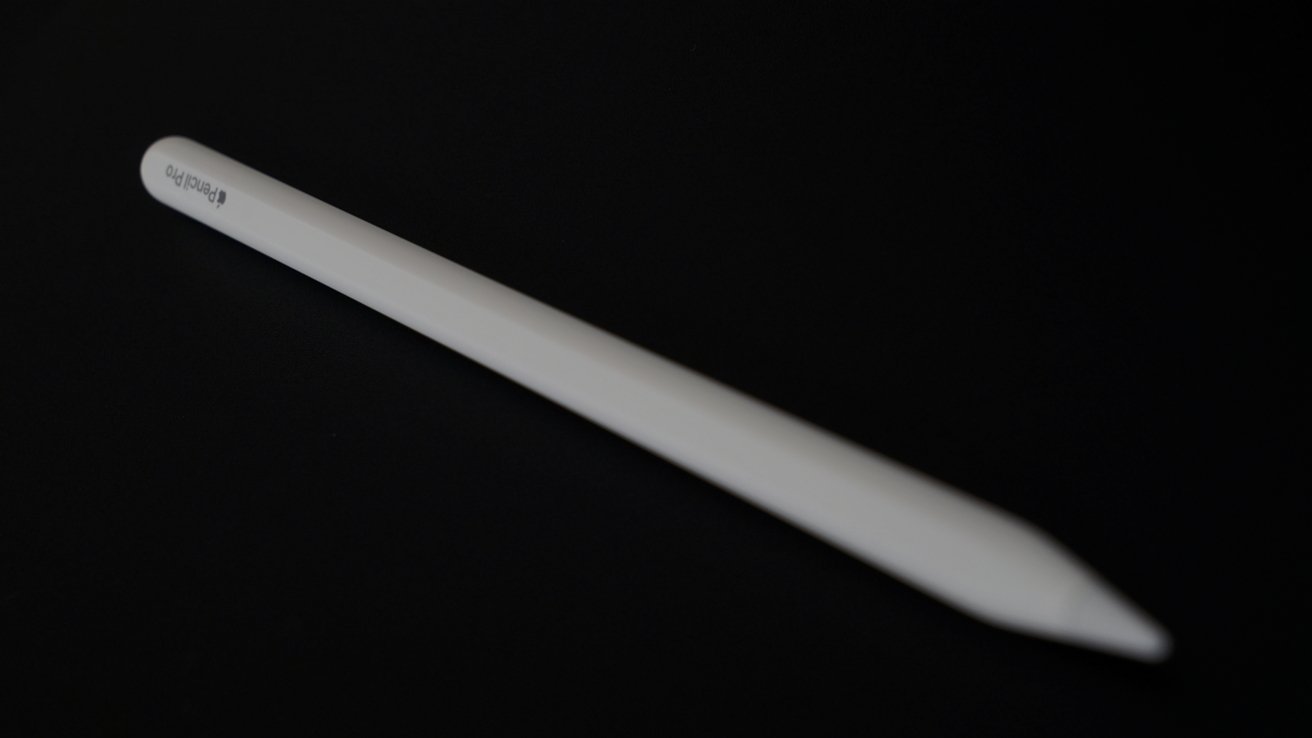

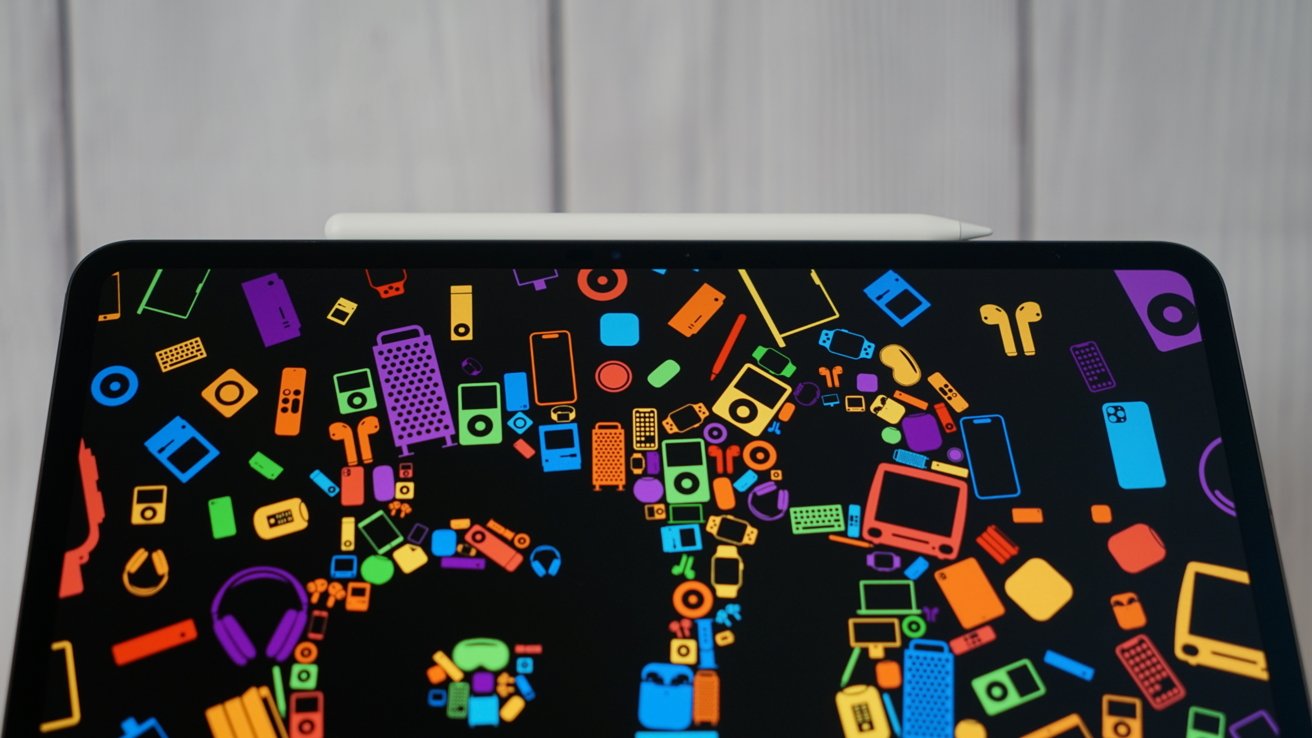
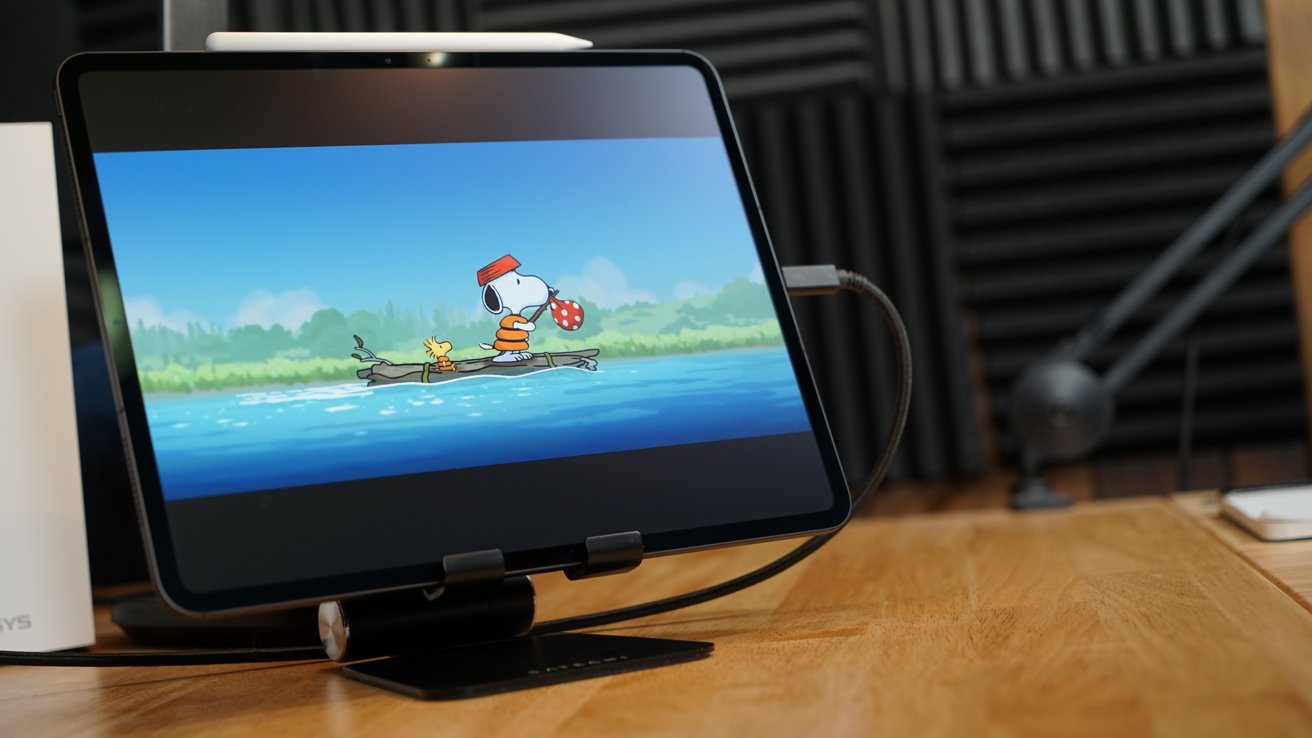
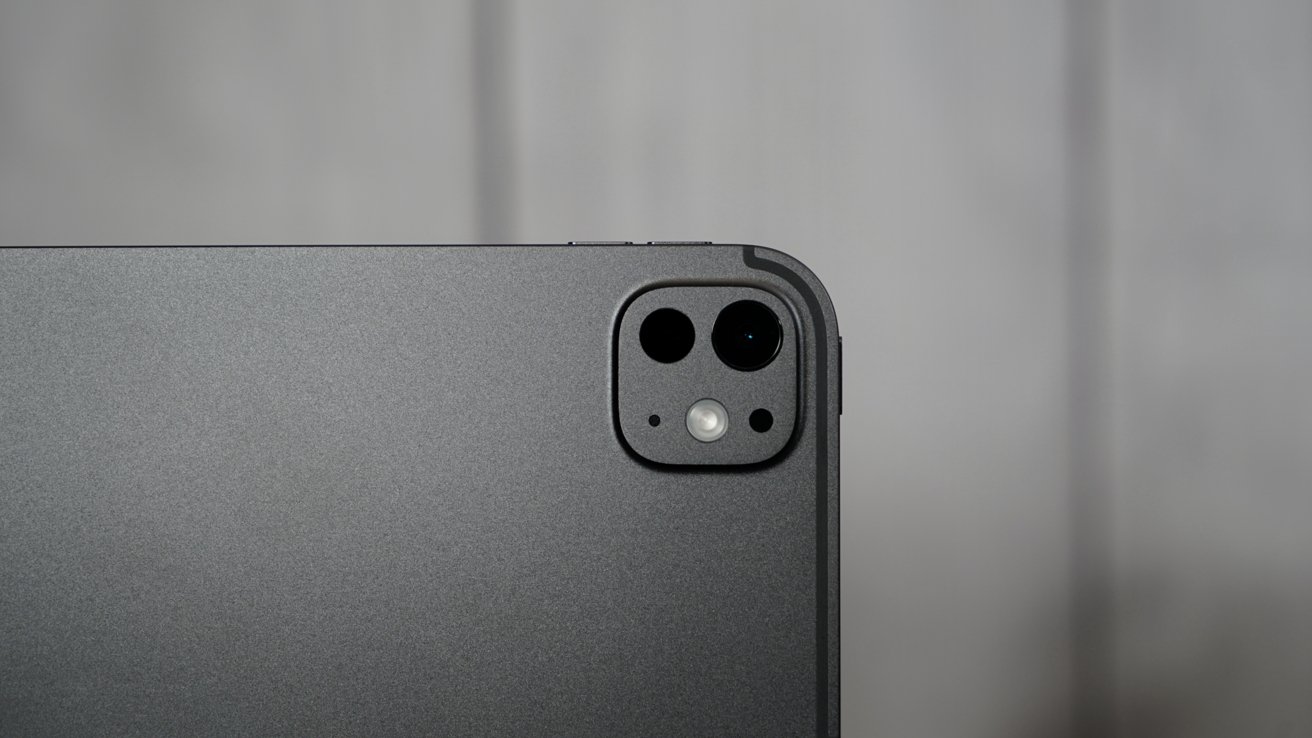
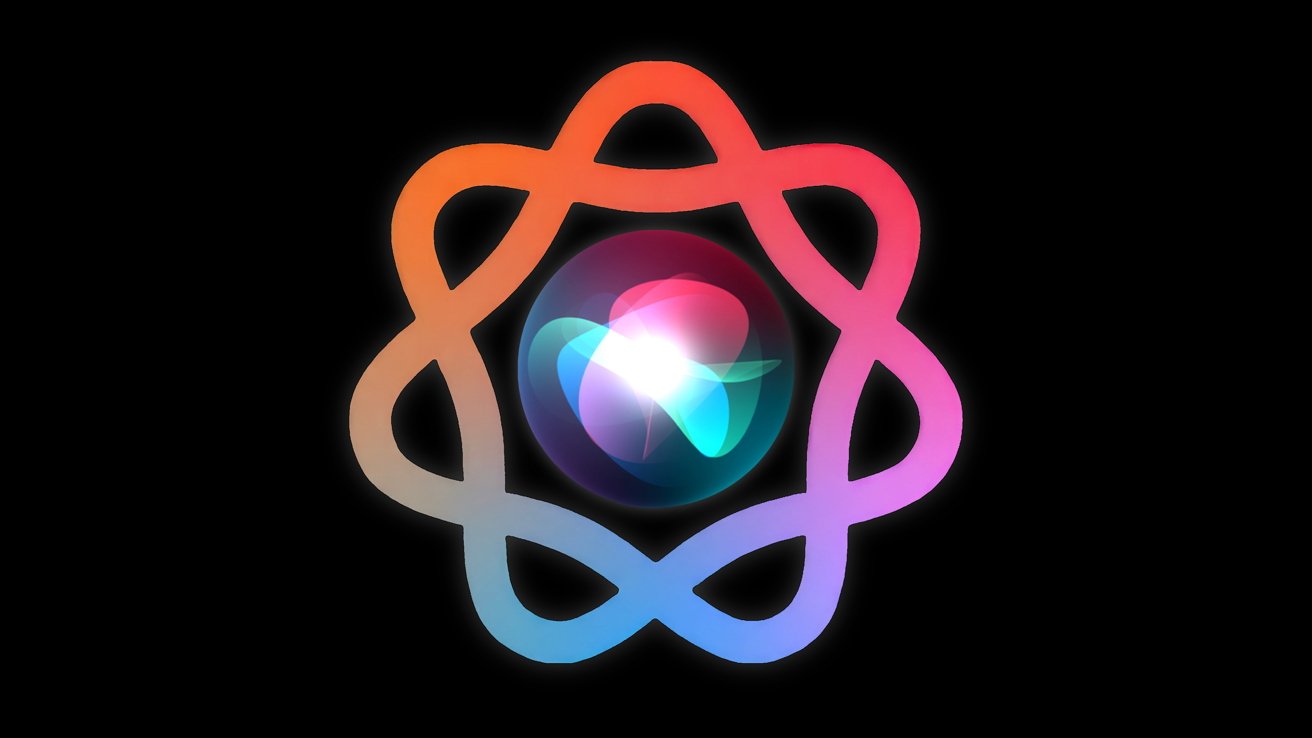
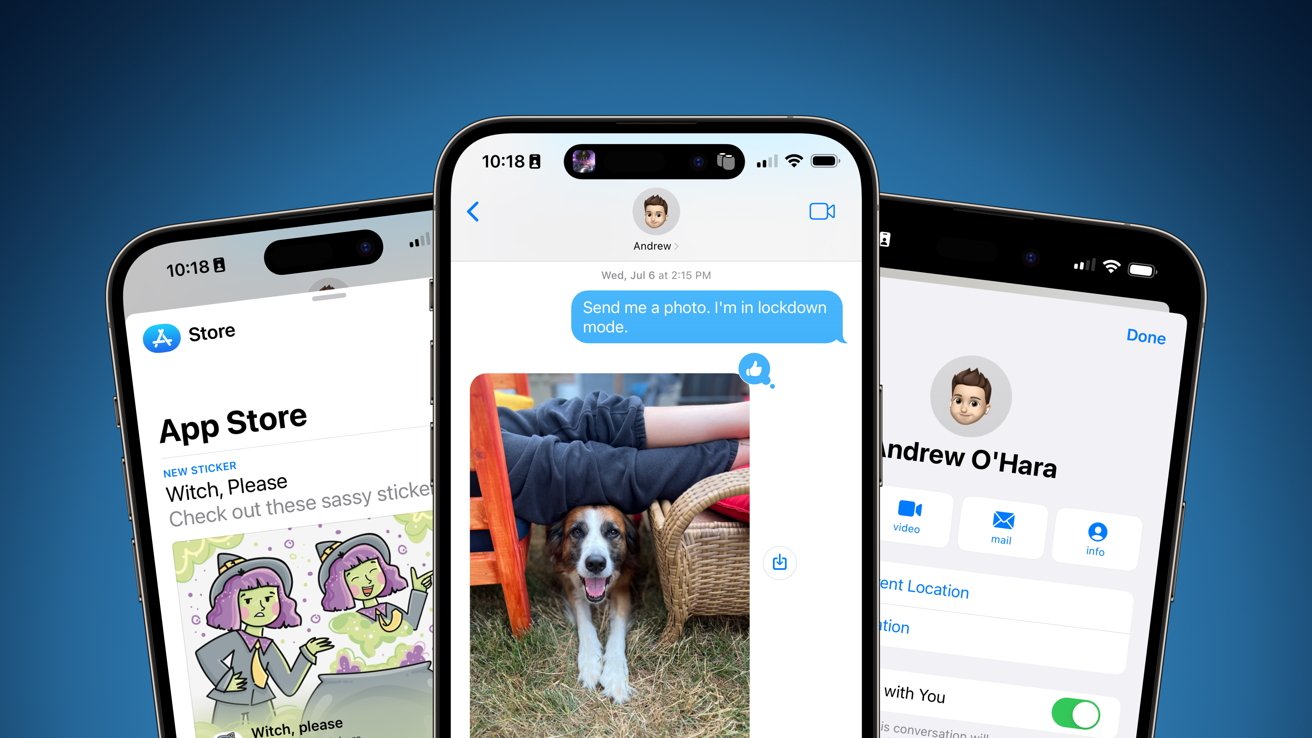
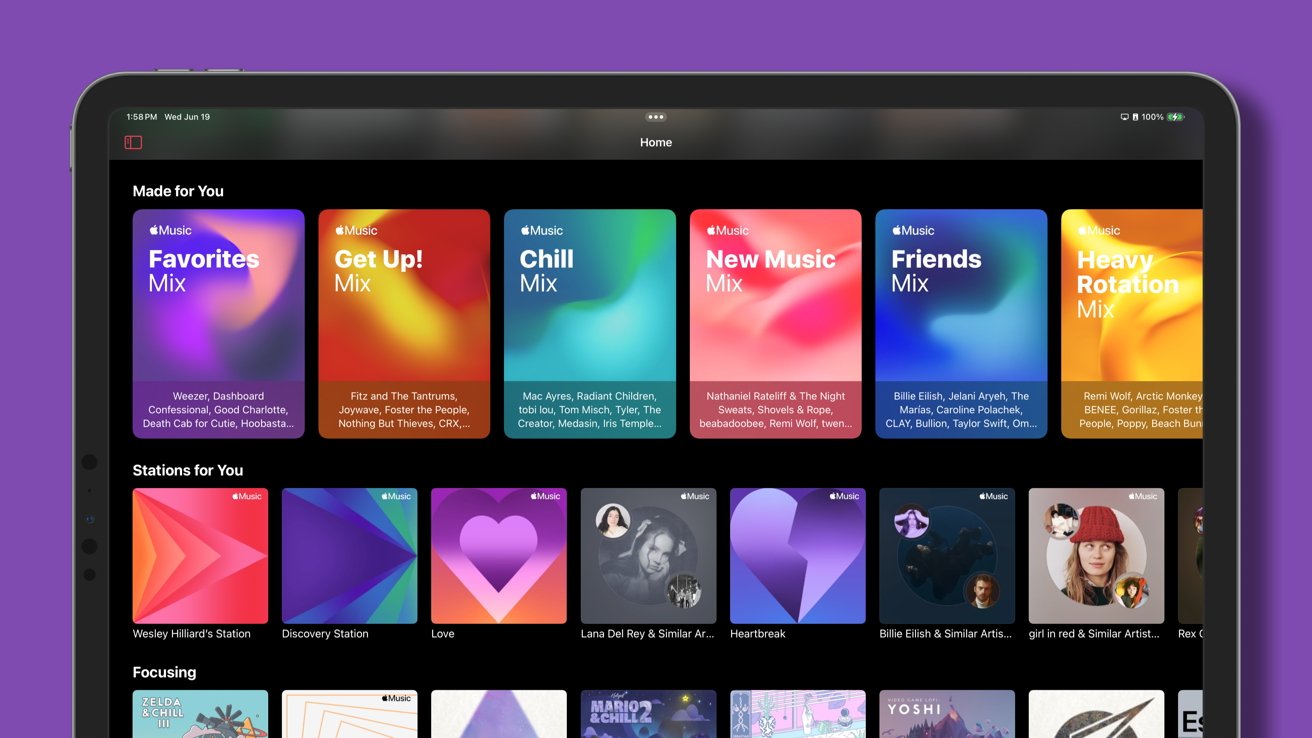

 Andrew Orr
Andrew Orr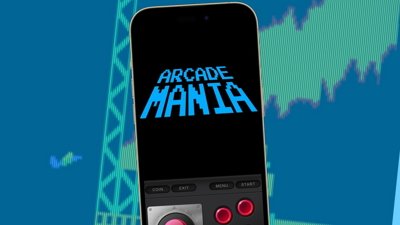
 Malcolm Owen
Malcolm Owen


 Marko Zivkovic
Marko Zivkovic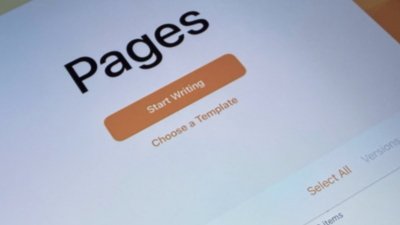
 William Gallagher
William Gallagher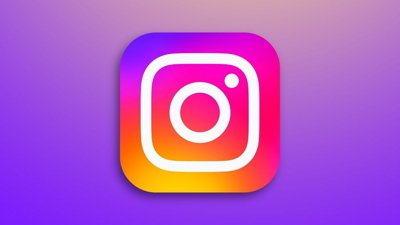
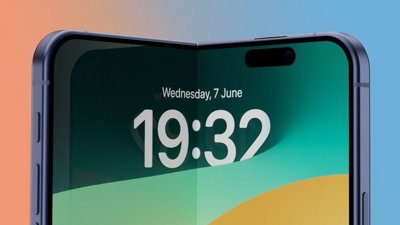
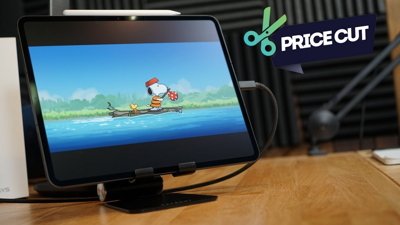
 Christine McKee
Christine McKee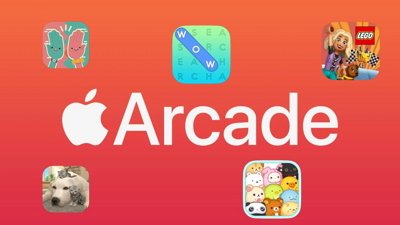
 Amber Neely
Amber Neely